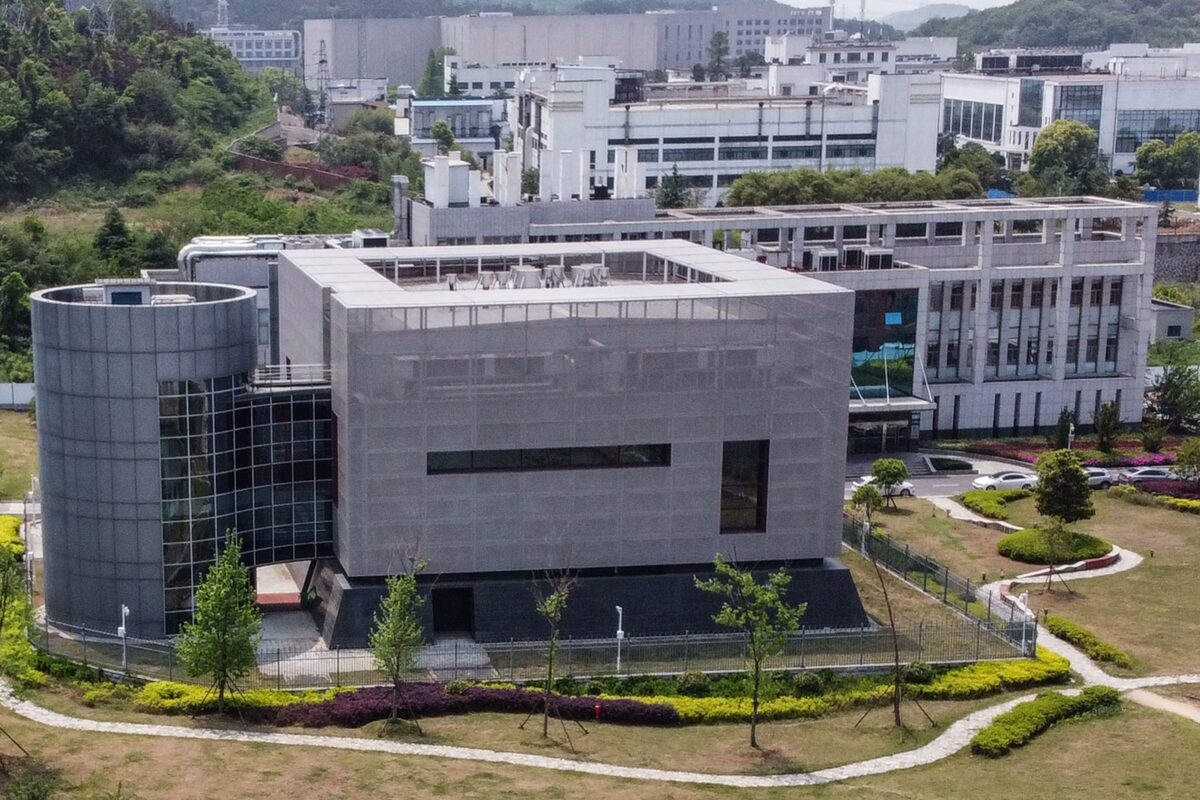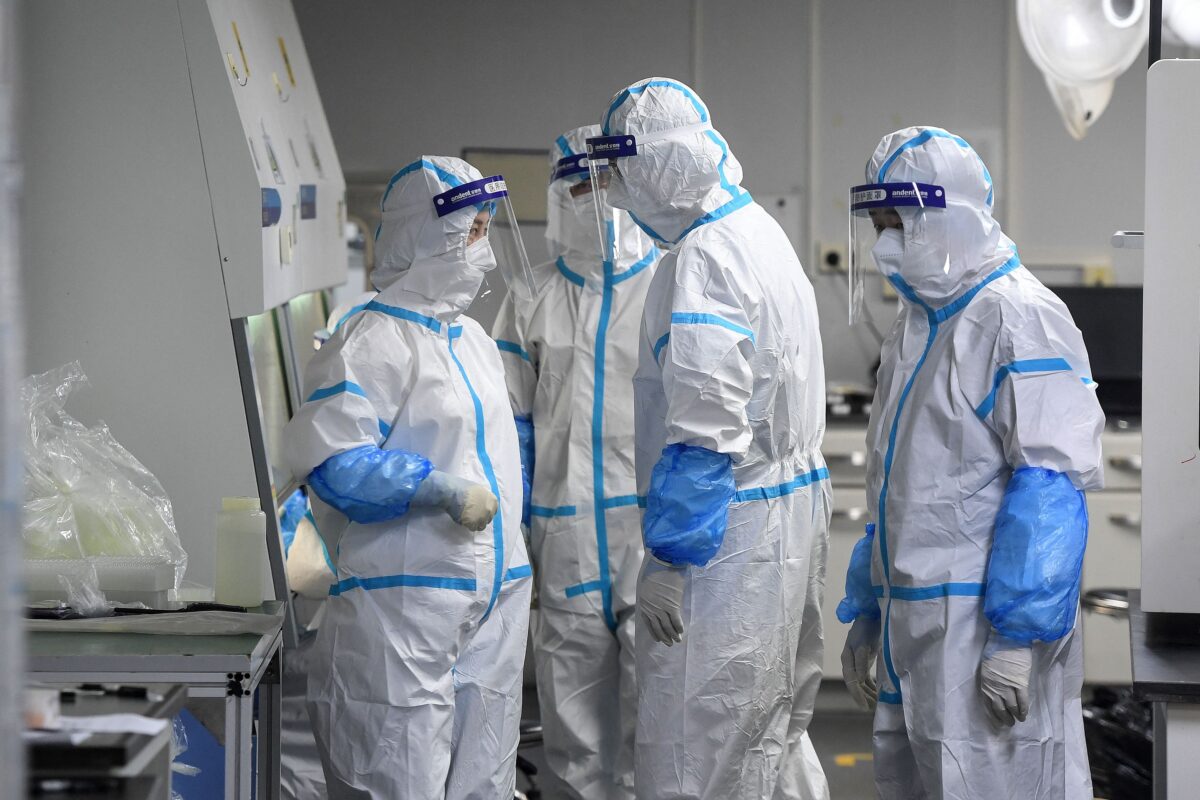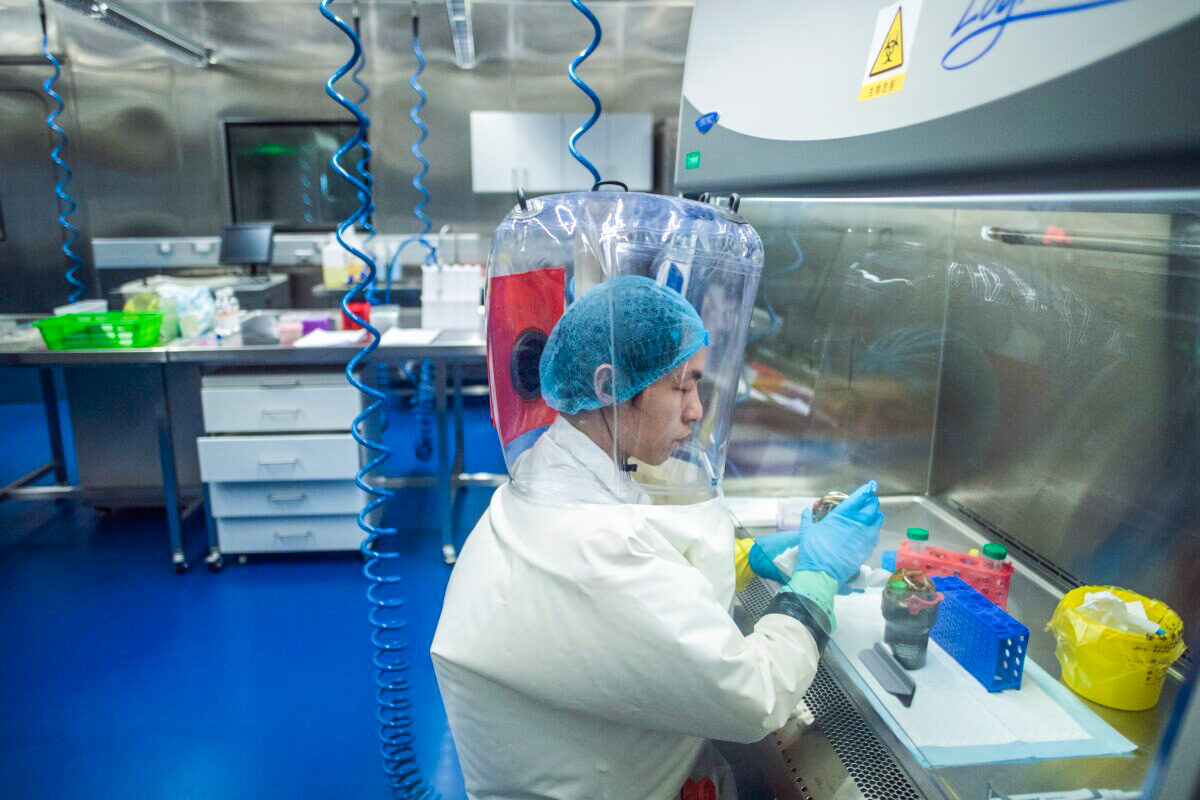Lab leak? Bioweapon? Wet market? Two years after a new coronavirus was first reported in Wuhan, China, the world still knows very little about the origins of the virus, named SARS-CoV-2 scientifically. Where it came from, and how it first infected humans, are questions that have still not been answered conclusively.
“Viral,” a new book from Harper Collins, examines the start of this pandemic, and why so much is still unknown. Scientist Alina Chan of the Broad Institute of MIT and Harvard, and Matt Ridley, a Ph.D. zoologist and science writer, explore three possibilities, including an accidental release of the virus from the Wuhan Institute of Virology.
The authors presented their findings in a recent virtual discussion with John Walters, president of the Hudson Institute, a Washington-based think tank.
What emerges is a damning indictment of global health and science institutions, and a story of two years of failing to properly investigate the virus origins.
Natural Origins?
One of the earliest theories promoted in the news media was that this virus emerged naturally from animals in the Wuhan area. According to Chan, there just isn’t much evidence to support this idea. “They’ve spent a year and a half searching for an animal source of this virus,” said Chan, “and they have found nothing.”
According to Chan, Chinese authorities spent months analyzing animal tissue, human blood samples, and tracking infections. Despite all that, “Chinese authorities have not found the original animal source,” said Chan.
Instead of assuming some unproven natural origin, Chan says that scientists should be focused on what happened at the Wuhan lab. Her research has uncovered documents “showing quite an extensive coronavirus collection and manipulation at the Wuhan Institute of Virology.”
“I’d say that the burden is on the natural origin side,” said Chan, “to somehow show that these activities [at the Wuhan Institute], this collection of tens of thousands of high-risk pathogens from animals and humans… collecting into Wuhan, these experiments where genetic modifications are made to these viruses—somehow all that did not lead to the emergence of SARS-CoV-2.”

Missing Wuhan Data
To emphasize the possible connection between the Wuhan lab’s activities and the outbreak of the virus, Chan makes a comical analogy: “Let’s say that we found in a document from early 2018, where they [the Wuhan lab] proposed putting a horn onto a horse. Then at the end of 2019, somehow a unicorn suddenly appears in that city.”
Despite this logical inference, the evidence presented in “Viral” is mainly sourced from publicly available research papers, media reports, and funding documents—but none of it comes directly from the Wuhan Institute of Virology. The reason: the Wuhan lab took all its data offline on Sept. 12, 2019 – three months before the first infections were reported.
In December 2020, Shi Zhengli, the director of the Center for Emerging Infectious Diseases of the Wuhan Institute of Virology,, told the BBC that the Wuhan lab database was taken off the internet because of many hacking attacks.
Co-author Ridley explained the significance of this hidden data: “There exists in Wuhan a database of 22,000 samples, specimens, and [genetic] sequences. And that database went offline just before the start of the pandemic. It has never been brought back online. So we don’t have any idea what’s in it. It could tell us a lot about the viruses they were working on in that institution.”
This deliberate suppression of scientific data, months before the pandemic began, is one of the strongest pieces of evidence suggesting an involvement of the Wuhan lab in the release of SARS-CoV-2, he said.
“It is quite extraordinary,” said Ridley, “to develop a large [virus] database as part of an effort to prevent pandemics and then not release the data when a pandemic comes along.”
The CCP Virus
This data suppression is not the first coverup of pandemic information by the Chinese Communist Party (CCP). It’s part of a propaganda campaign that has been covered extensively in the pages of The Epoch Times.
In recognition of the CCP’s behavior, including censorship and arrests of doctors who warned of the danger, the Epoch Times adopted the “CCP virus” as its name for the SARS-CoV-2 virus. “This name,” wrote the editorial board in early 2020, “holds the CCP accountable for its wanton disregard of human life and consequent spawning of a pandemic that has put untold numbers… at risk.”
As early as March 18, 2020, the editors of The Epoch Times pointed to the Wuhan lab as the possible source of the CCP virus, stating “there is understandable concern about the activities of the Wuhan Institute of Virology, China’s first P4 lab, one meant for working with easily transmitted pathogens that can cause fatal illness. As the official narratives offered for the source of the virus have been disproven, questions have been raised about whether the CCP virus leaked from the institute.”
The authors of Viral explored this possibility in detail and concluded that the Wuhan lab is the most likely origin of the virus.

Failures of the Science Community
Another piece of the puzzle explored by the authors: the startling lack of interest from the world scientific and medical communities into the origin of the virus.
According to Ridley, the world’s health and science organizations have failed in their mission to protect and inform the public. “It’s fair to say that they have let down the public,” he said. “The World Health Organization mounted an investigation that took a very long time but was frankly rather superficial and produced rather poor results.”
Ridley said the Americans have not done any better. “The U.S. government has not been forthcoming with information that it must already have—because it funded the research in this space.”
“And the institutions of scientific publishing have not been as transparent as they should be—instead of publishing documents which… were prematurely ruling out one hypothesis [laboratory origin] on the basis of what seems now to have been a political preference.”
Even the world’s press has failed in its duties to investigate and report. “The mainstream media has shown surprisingly little curiosity” about the origin of the virus, said Ridley. Social media platforms “have even forbidden conversations about one of the more obvious hypotheses. Facebook made it impossible for anybody to discuss laboratory leaks at all. So on all sorts of levels, there has been a surprising lack of transparency and lack of accountability.”
Into this void of scientific and journalistic inquiry, independent scientists, bloggers, and writers like Chan and Ridley have tried to piece together the story.
“The whole story has come to depend heavily on a few extraordinarily brave and persistent individuals,” said Ridley. “Open-source analysts who looked into sources of information that are hard to find and pieced together information of great value. It’s quite an interesting case of citizen science.”
Among the scientists researching the origins of the pandemic, Chan has stood out for her persistence in the face of constant attacks from other scientists. Though she has never suggested that the virus was created or released with the intention to harm, Chan has faced criticism, ridicule, and even accusations of racism since she began investigating the laboratory leak hypothesis.
“This search for the origin was corrupted pretty early on in 2020,” she said. “It was cast as a racist thing to ask. Even other scientists were calling me anti-scientific, racist, or a race traitor”
“This really speaks to the problem of public trust in science,” she said, “and how that trust can be jeopardized when scientists are found repeatedly to be withholding information or deciding what’s best for the public to know.”
David Asher, a Hudson Institute senior fellow, commented: “The book really reads to me like an indictment—not just of the government of China, but a global sort of indictment of how we have erased evidence, we’ve covered up amazing amounts of information from public disclosure. It’s almost inexplicable to me.”
The pandemic said Asher, “is literally the biggest disaster to befall our country and the world since World War II. It’s about 20 percent of GDP [lost due to pandemic restrictions]. That’s more than we lost in the entire Great Depression.”
“So the question is: what is going on with our national health authorities, and why are they acting like this?”
News Article by Lorenzo Puertas, Freelance Reporter
Lorenzo Puertas is a freelance reporter covering China-related topics for The Epoch Times. He is a long-time student of Chinese history and culture, with a degree in traditional Chinese medicine, and a degree in philosophy from the University of California, Berkeley.

